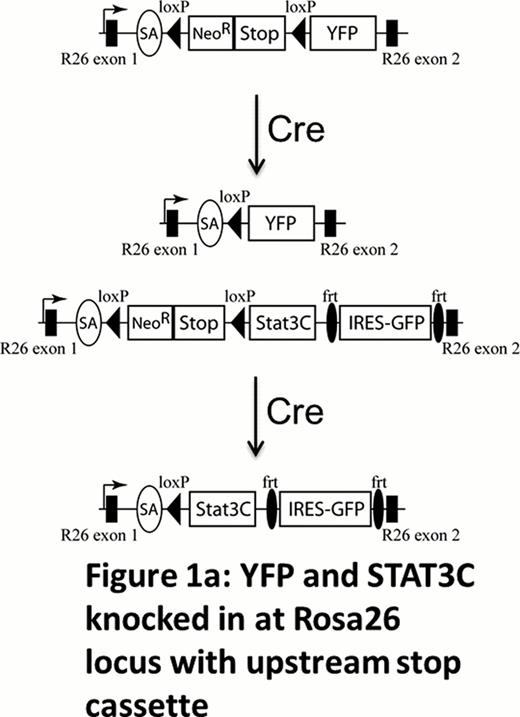Abstract
Abstract 66
Cutaneous T cell Lymphoma (CTCL) is a heterogeneous group of non-Hodgkin's lymphomas characterized by skin-homing malignant T cells. The etiology of CTCL remains enigmatic, but constitutive Signal Transducer and Activator of Transcription 3 (STAT3) activity is characteristic of this malignancy. CTCL cell lines undergo growth arrest and apoptosis following inhibition of STAT3 signaling, suggesting that STAT3 may be a pro-survival factor in these cells. STAT3 phosphorylation is also required for the initiation and maintenance of the Th17 differentiation program, a recently identified subset of CD4+ T helper cells, implicated in a number of chronic inflammatory conditions including rheumatoid arthritis and psoriasis. Furthermore, we know that Histone Deacetylase inhibitors (HDACi) namely Vorinostat and Romidepsin are very active agents for treatment of CTCL but their mechanism of action is still to be elucidated. Our goal is to probe the contribution of Th17 mediated inflammation in CTCL and to examine whether HDAC inhibitors work by modulating Th17 inflammation in the context of this malignancy.
Using conditional gene targeting approach we have generated a transgenic 100% penetrant mouse model of CTCL wherein expression of a hyper-active STAT3 mutant protein (STAT3C) selectively in T lymphocytes results in skin pathology highly reminiscent of this human malignancy. To have a better understanding of the contribution of STAT3 in CD4 T cell differentiation program and CTCL, we used lymphocytes and splenocytes from 8 weeks old STAT3Cstopfl/fl (without CD4Cre, thus no pathology) and control YFPstopfl/fl (Yellow Fluorescent Protein floxed) mice (Figure 1a). We isolated naïve CD4 cells using Dynabeads and treated these CD4 cells with a transducible Cre enzyme (Tat-Cre) to delete the upstream stop cassette ex-vivo. These cells were then plated with stimulating α CD3/CD28 antibodies in various cytokine cocktails as shown in Figure 1b. These cells were harvested after 84 hours and stimulated with PMA/Inomycin for 4 hours for flowcytometric analysis. We are now using this in-vitro approach as well as our mouse model and primary tissue samples from CTCL patients to explore the impact of HDAC inhibitors on Th17/Treg balance.
Upon Tat-Cre treatment we were able to analyze GFP+ (and therefore STAT3C expressing) vs. GFP- (control) T cells in the same differentiation conditions. Hyperactive STAT3C mutant protein favored TH17 differentiation as GFP Positive cells had significantly augmented IL17A production (Figure 1b). On the other hand, STAT3C expressing GFP positive cells in Th0 and Th1 differentiation conditions had less IFN-γ production compared to the GFP negative cells and control YFP fractions. Even the GFP negative fraction of STAT3C had less IFN-γ and more IL17A production than the control YFP fractions due to the cytokine milieu created by STAT3C expressing cells present in the same well.
These results highlight an intriguing possibility that STAT3 dependent Th17 cells play a role in CTCL pathogenesis. Using our newly developed mouse model and CTCL patients' blood and skin samples (IRB approved), we are trying to distinguish whether Th17 cells are instigators of chronic inflammation that contributes to the malignant transformation of T cells or that Th17 cells may actually be the cells of origin in this malignancy. Our ongoing experiments also include the effects of HDACi on this ex-vivo CD4 T cell differentiation. In addition, we are studying the hallmarks of Th17 differentiation namely IL-17A, IL-22 and pSTAT3 positivity in the skin biopsy and blood samples of CTCL patients before and after treatment with HDACi. These experiments will help us determine the impact of HDAC inhibition on STAT3 activity and Th17 differentiation and have a better understanding of their mechanism of action in CTCL. Our hope is that our study will guide us to comprehend the contribution of chronic inflammation in carcinogenesis and potentially identify novel treatment targets and strategies in the field of hematological malignancies.
No relevant conflicts of interest to declare.
Author notes
Asterisk with author names denotes non-ASH members.



This feature is available to Subscribers Only
Sign In or Create an Account Close Modal